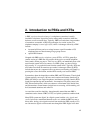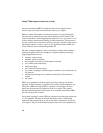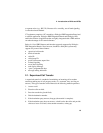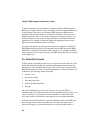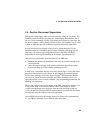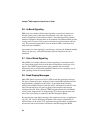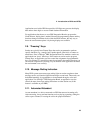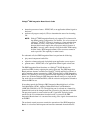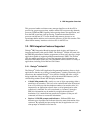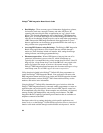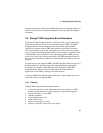Dialogic
®
PBX Integration Board User’s Guide
2.6. In-Band Signaling
PBXs may use a method called in-band signaling to control their station sets.
In-band signals use the same band of frequencies as the audio signal; this is
usually accomplished with touch-tone signals. This method provides a limited
amount of integration because there are no standards, and different PBXs provide
varying levels of control. Call progress tones that even similar models send can
vary. This means that applications, even on identical PBXs, would have to be
tuned with each installation.
An example of in-band signaling is transferring a call using the flashhook method
There is no data (e.g., caller ID information) passed along when the call is
transferred.
2.7. Out-of-Band Signaling
Many PBXs use a method called out-of-band signaling to control their station
sets. Out-of-band signals do not use the band of frequencies used by the voice
signals. These PBXs transmit control signals and data that can include
information such as called/calling number ID. Because of its versatility, out-of-
band signaling is often the selected method.
2.8. Read Display Messages
Many PBX station sets have an LCD or LED screen that can display messages.
The type of information that is displayed varies with the PBX manufacturer and
the programming capabilities of the switch. Typical information includes:
calling/ called number ID from within the switch, ANI digits from the CO, hook
state, time and length of call, name assigned to the extension, and message
waiting notification. With a Dialogic
®
PBX Integration Board, this information
can be passed “unprocessed” to the application. This means that the same data
that is sent to the display is captured by the PBX Integration Board.
By capturing the same display messages that a phone set receives, an application
can “see” and “record” the display information. This display information (in
ASCII format) can be useful in CT applications because it enables an application
to know the state of the extension connected to the PBX Integration Board.
24




